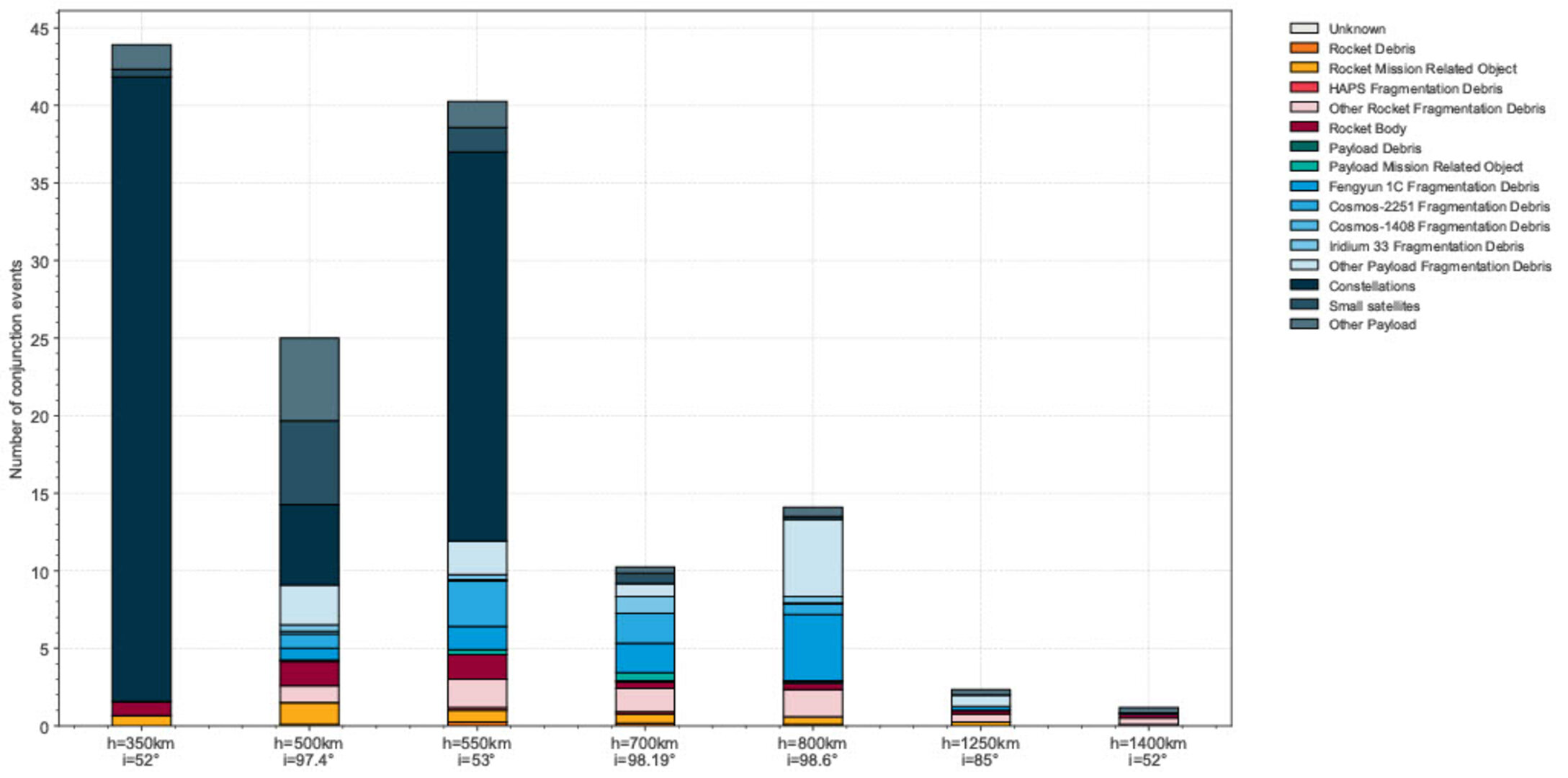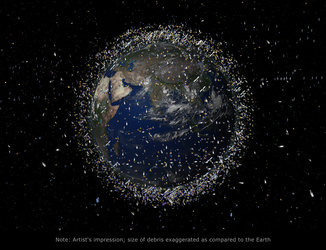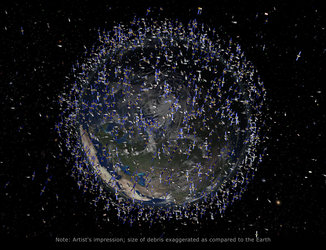

Low-Earth orbits are getting crowded
The increase in launch traffic and the long-lasting nature of space debris in low-Earth orbit is causing a significant number of “close encounters”, known as conjunctions, between active satellites and other objects in heavily congested orbits.
This plot shows number of times a typical satellite at various altitudes experienced a possible collision alert during 2021.
At lower altitudes, satellites more frequently encounter small satellites and constellations. At higher altitudes, they more often encounter debris objects left over from a small number of famous and significant fragmentation events – visible in this plot in shades of blue.
Not all alerts require evasive action. But as the number of alerts increases, it will become impossible for spacecraft operators to respond to them all manually. ESA is developing automated systems that use artificial intelligence and other technologies to help operators carry out these “collision avoidance manoeuvres” and reduce the number of false alarms.
More on ESA's 2022 Space Environment Report.





